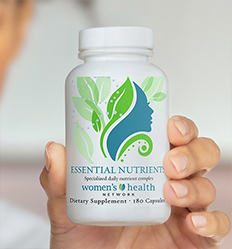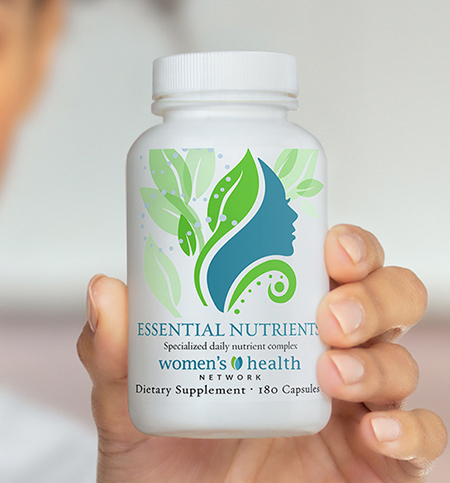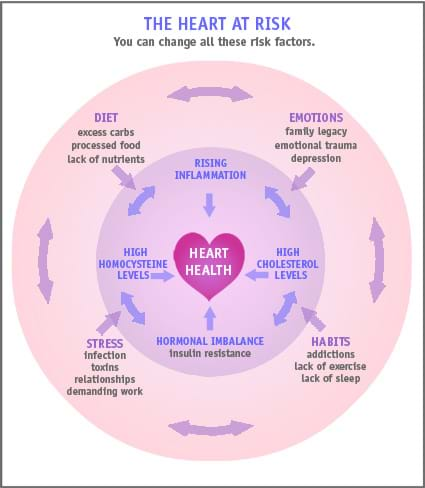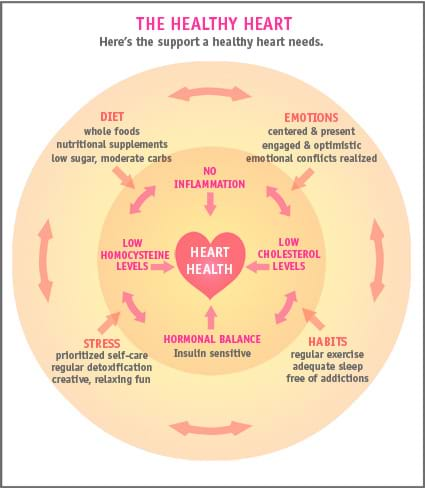Lowering high blood pressure is just as important for women as it is for men — so why does most of the news you see about how to lower high blood pressure focus on men?

The lack of attention could be because until menopause, your risk of developing high blood pressure is actually much lower than men your age. But after menopause, your risk of high blood pressure jumps drastically.
Don’t wait until after menopause or until you experience symptoms to pay attention to your blood pressure. Unfortunately, most women don’t suffer from symptoms of high blood pressure until the damage has been done — and it can’t be reversed.
Take just a few minutes to see how you can naturally lower high blood pressure today.
What is high blood pressure?
Blood pressure is the force exerted by the flow of blood on the walls of major arterial blood vessels — similar to the way that water moves through a garden hose. It is determined by the amount of blood being pumped by the heart in a minute (cardiac output) compared to the resistance of the arterial vessel walls.
Both the amount of fluid in your arteries and the relative elasticity, or “hardening” of the arteries, are factors in high blood pressure (also known as hypertension).
Normal blood pressure for an adult is 120/80 mmHg, with anything higher than that considered abnormal, according to the National Heart, Lung and Blood Institute.
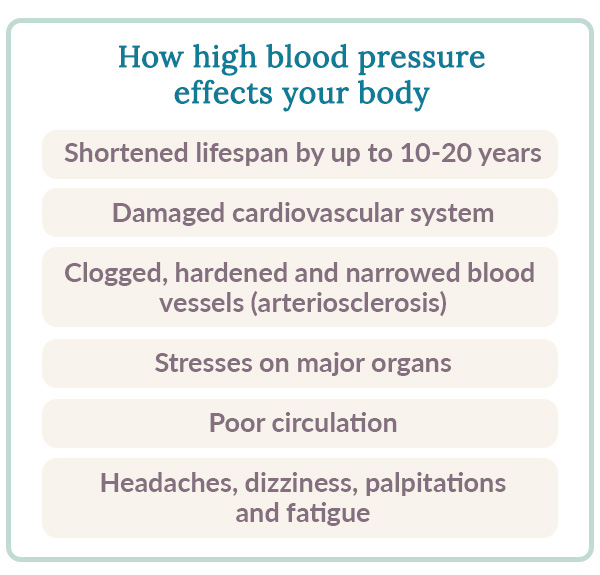
High blood pressure in women
When a woman is 35 years old, she’s only one-third as likely to have high blood pressure compared to a man who is the same age. By age 65, this gap evens out, with women running the same risk as men. Even women with normal blood pressure readings when they are younger may develop high blood pressure once they’ve gone through menopause.
Estrogen seems play a protective role in modulating blood pressure, with a decline in estrogen levels possibly leading to the arteries losing some of their elasticity. The Women’s Health Initiative (WHI) study seemed to indicate that Hormone Replacement Therapy (HRT) mimics estrogen’s soothing effects on the cardiovascular system for a brief time following menopause. Within five years, HRT appeared to have the opposite effect.
What factors contribute to high blood pressure?
The following are some of the factors that contribute to high blood pressure:
- Stress
- Lack of physical activity
- Being overweight
- Too much salt intake
- Alcohol
- Caffeine
- Nicotine
- Other toxins
What about conventional treatments?
High blood pressure medications may treat symptoms but not the underlying causes. Some may not even control your blood pressure over a full 24-hour period. They also come with their own side effects. Antihypertensives work by:
- Decreasing blood volume via increased urine production.
- Facilitating blood flow through dilation of blood vessels.
- Decreasing the rate and/or force of heart contractions, thereby decreasing volume of blood pumped through arteries.
- Other drugs block natural chemicals produced by the body to combat low blood pressure.
How to prevent or reverse high blood pressure
You don’t have to try everything all at once to make big changes. Small but steady changes diet and lifestyle changes are also important on your way to improving your blood pressure.
Get moving every day. When it comes to lowering blood pressure, exercise is proven as effective as medication with higher intensity exercise the number one way to treat high blood pressure.
It’s thought that exercising makes your artery walls more elastic, which could be why it is so effective when it comes to your blood pressure. Try to exercise 30-60 minutes each day. It doesn’t matter what kind of exercise you choose — just do something that you enjoy so that you do it every day.
If you are just beginning, take the first step of walking out to the mailbox, taking the stairs or leaving your car at the far end of the parking lot. From there, add on distance and time. If you are brand new to exercising, you may want to check with your healthcare provider first.
If you are overweight (Body mass index over 25) or obese (BMI over 28), try to lose 10 pounds. Being overweight is a major factor when it comes to high blood pressure. The type of fat that accumulates deep in the belly (known as visceral fat) is linked with high blood pressure, as well as high cholesterol, insulin sensitivity and more.
The good news is that even a moderate amount of weight loss can improve your blood pressure. The DASH (Dietary Approaches to Stop Hypertension) diet is a diet developed by the National Heart, Lung and Blood Institute for a heart-healthy lifestyle. It includes foods high in fruit and vegetables and low-fat dairy products to lower hypertension, while decreases foods high in animal fat and simple carbohydrates. The DASH diet, which is similar to a Mediterranean diet, has been found to significantly raise below-average potassium levels, and to decrease blood pressure.
Practice emotional stress management. Responding negatively to stress raises your risk of high blood pressure. We all experience stress is our lives, and the key is to find healthy ways of dealing with both emotional and physical stress.
For example, studies have shown that the social support you have can affect your health. For blood pressure in particular, research shows people with supportive spouses and a job they liked were found to have significantly lower blood pressure than those who did not, even with the same amount of external stress.
Yoga and meditation both provide many health benefits, including those for heart rate and blood pressure. Visit the ABC-of-Yoga for poses and breathing exercises that can help you stabilize your blood pressure.
If you’re using alcohol, caffeine or nicotine for stress management, know that these are all implicated in high blood pressure. Work on quitting or cutting down over time.
Limit your salt intake. Between the huge amount of hidden sodium in processed food and liberal use of iodized table salt (sodium chloride, which is about one-quarter sodium), many of us are getting four times our daily requirement per meal.
All salt isn’t bad. And we’re learning that low potassium may play a significant role too. That’s why we recommend supplementing with “good” salt while decreasing “bad” salt intake, which has been shown to successfully lower blood pressure.
You can do this by eating a diet high in potassium-rich foods. Good sources include avocados, bananas and yogurt. Read the labels on your favorite packaged foods to check for hidden sodium forms of salt (e.g., MSG), which are often significant. And stick to a good quality sea salt when cooking and setting the table — you’ll get vital trace minerals without so much of the sodium and chloride found in ordinary table salt. Whenever possible, substitute fruits, nuts, vegetables, and natural juices for low-potassium processed foods and soda.
Detox through diet and more. If your main organs of detoxification — the liver, kidneys, and skin — become overburdened by toxins, hypertension is a likely symptom.
The best ways eliminate excess toxins from your body are through cleaning up your diet, drinking lots of filtered water, and adding certain antioxidant and supportive nutrients to your daily regime. Flush toxins and excess salt by drinking eight to ten 8-oz glasses of filtered water every day. This will assist your renal function and weight loss.
Finally, take a pharmaceutical-grade multivitamin every day to help compensate for and metabolize the toxic load. Make sure your multi contains calcium, magnesium and potassium to offset sodium salts, as well as essential fatty acids to protect your blood vessels.
https://www.healthyfutures.com/heartdiseaseandstroke/hypertension-references/
National Heart, Lung and Blood Institute website https://www.nhlbi.nih.gov/health/health-topics/topics/hbp/ (accessed 05.31.17)







